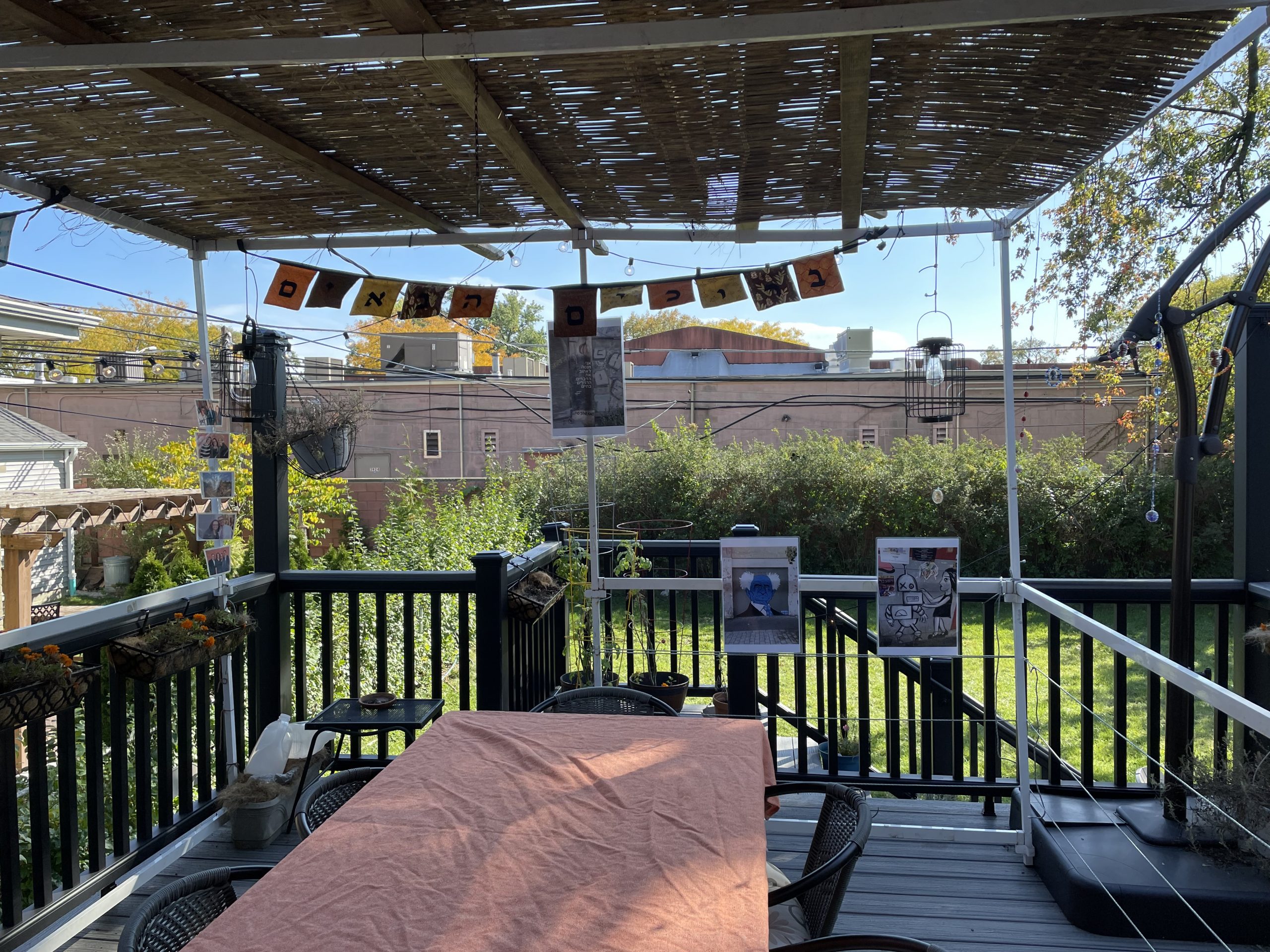
One of the many emotional moments of my year of mourning for my father came when I was building our sukkah. Sukkah-building is often a family affair, because it’s so hard to do alone and it’s something kids generally love to do. That was true for me growing up, and it has been true with my own children. While so many other Jewish rituals involve putting away and cleaning up, sukkah-building is creating something where nothing existed before. Unlike cooking, a sukkah doesn’t get consumed but lasts. It lives in space. And you can decorate it. What’s not to love?
But what also usually happens in our family is that the kids get tired after the initial phase. So after my children had helped put together the poles and put up the canvas tarp (the skhach—a bamboo mat in our case—would go on top much closer to the holiday), I was left alone to do some of the last touches. That year, I decided to secure the sukkah to a railing so that it wouldn’t blow around too much, as it had the year before. I took out some rope and began tying knots and hitches I had learned in the Boy Scouts.
And that’s when I thought of my Dad, who had been our Scoutmaster growing up and who taught me not only how to do the actions I was performing with my hands, but the context in which I was doing them. As I wrote in a letter to him that I posted on Facebook, “I would have loved to call you to tell you about it, because I know you would have schepped a lot of nachas. I’m sure you’re enjoying a wonderful sukkah up there. We have a picture of you in ours, and we miss you.” (Picture of our family sukkah is above.)
There’s something in this story that gets at the heart of what Sukkot can be: a time of visceral, embodied, felt openness and flow—between the natural world and the world of civilization we construct that, in our minds at least, separates us from it; between people past and future who are with us here in the present, guiding our hands and visiting us as ushpizin; between our own hearts, minds, and bodies, which, in this uniquely physical, spatial ritual, flow through one another.
Yet for all that, the act of sukkah-building and sukkah-dwelling depends on letting go (something I explored last week). The sukkah is meant to be a temporary dwelling, and this particularly comes through in the requirements for the roof. As the Mishnah teaches, the skhach or roof of the sukkah must be made of formerly living material. If one had a grape vine and wove it on top of the sukkah in order to serve as skhach, the sukkah would not be a sukkah until the vine was cut. As long as it’s still attached to the earth, still holding on and still able to grow later, it can’t serve as skhach. The message would seem to be: We can’t hold on. We have to let go.
In that letting go, of course, we find possibilities for different forms of embrace—with neighbors, loved ones, ourselves, the world, the Holy One. By opening the walls and doors of our homes, by venturing outside, we bring down the baffles of our regular homes and can enter the embrace of a less secure yet more expansive sense of home.
